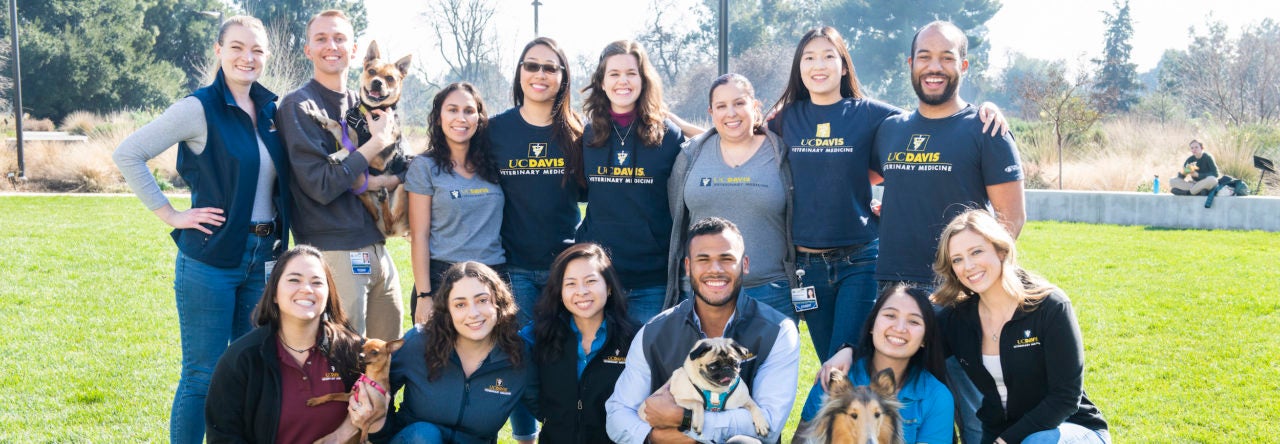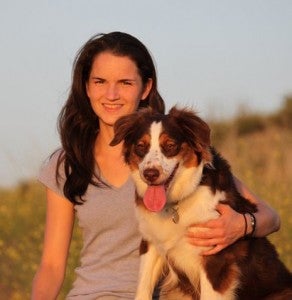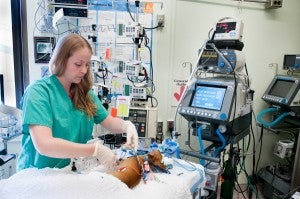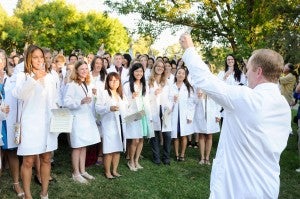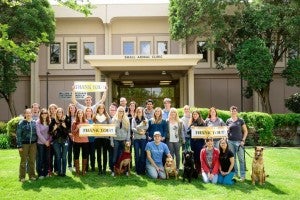“We are made wise not by the recollection of our past, but by the responsibility for our future.” – George Bernard Shaw
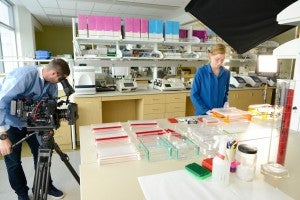
Time Magazine Video Unit videotapes Laboratory Technician Cheyenne Coxon in the One Health Institute Laboratory for an upcoming feature on the One Health program.
As I look toward the future of the School, I am struck by the incredible impact our people make in our society, advancing the health of animals, people, and the planet. This past year brought us many accolades as we relished the accomplishments of our students, staff, and faculty. The numerous stories that originated from our dedication ranged from cases of individual animals that were made healthy by the exceptional care provided by our talented clinicians and staff, to major discoveries that will set the stage for research into problems faced by our society.
We also had heartbreak in 2015 with the tragic death of one of our students, and we suffered along with the victims from the Valley and Butte fires. Most of these events could not have been predicted at the beginning of 2015, but we faced them with the courage and dedication that make us a global leader in veterinary medicine and biomedical sciences.
We have many ambitious goals for 2016, including the opening of two major facilities: the Veterinary Medicine Student Services and Administration building and the new South Valley California Animal Health and Food Safety Laboratory in Tulare.
Once again we lead the nation in research funding and continue to make major discoveries that set the stage for the future. Our incoming students are highly selected from a deep pool of applicants and have both the impressive academic credentials and the emotional intelligence needed to succeed in our curriculum and beyond. The DVM curriculum is based on modern adult-learning models and is composed of integrated content delivered using a student-centered approach. All four years of the “new” curriculum have now been implemented by the faculty, led by the Executive and Curriculum Committees.
Our staff teams continually strive to bring excellence to their work on a daily basis and are the foundation upon which we rely. Our faculty members are world-class leaders in their disciplines, bringing innovations and new ideas to advance our mission. The Veterinary Medical Teaching Hospital (VMTH) has met important financial goals and record numbers of patient visits have been occurring over the past several years. As a result, it appears that each week new treatments or amazing tales of clinical successes are being developed in our hospital that set the standard of care in animal health.
Like any new phase in the evolution of an organization as complex as our School, we will also face challenges and new opportunities in the upcoming year. We are seeking to utilize our resources efficiently and be good stewards of our financial resources. This next year will mark the fourth year in a row of zero increases in the base tuition for our students. Coupled with our record-setting efforts in scholarship fundraising totals, we are making good progress in our efforts to provide to our students a world-class education at an affordable cost.
We have an outstanding capital and design planning process that includes the transformation of the VMTH to the Veterinary Medical Center, incorporating trans-disciplinary approaches throughout our clinical teaching and education programs over the next decade. These plans will require us to focus our efforts on new partnerships that will invest with us as we build the future of veterinary medicine. We will need to continue to invest in the development of our people and their wellness, balancing work demands with an appreciation and support for their physical and mental health. Going forward, we must continue to support our goals to develop an inclusive and diverse workforce reflective of the population of California.
Thus, while we can be reflective of our past accomplishments, we must look towards the future, knowing that we have the talent, ideas, and knowledge to shape our destiny and meet our strategic goals. Collectively, we have reasons all around us to be optimistic about our future and I look forward to facing our opportunities and challenges together as your dean in 2016 and beyond.
